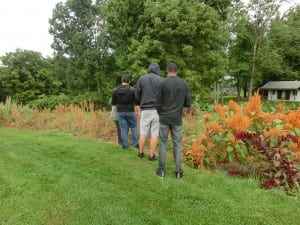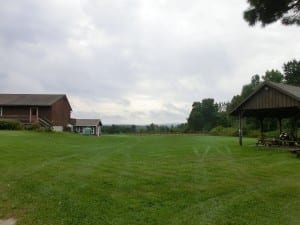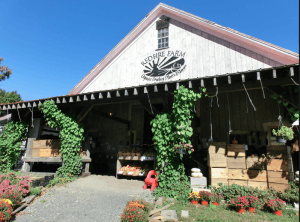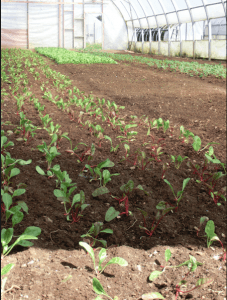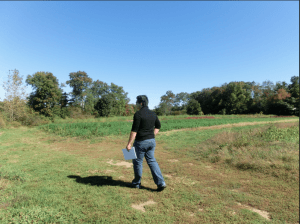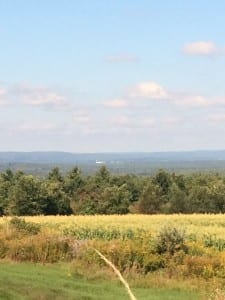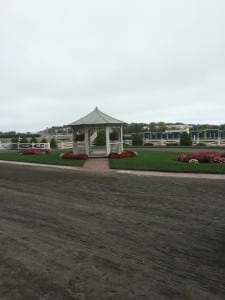Project Snapshot
Check out our blog for updates about our project and what the farm labor group has been up to!
September 3, 2014 by Samantha Ricci
Today our group traveled to the Department of Public Health in Canton, Massachusetts to meet with one member of our sponsor team, Dave Williams who is a Senior Environmental Analyst. We met up with him to further discuss our project and to also begin brainstorming ideas for the pamphlet that will be given to farm laborers throughout Massachusetts. Our first task of the day was to set a schedule for the rest of the term and to also decide on which days we will visit farm labor camps, Boston, and West Boylston. We decided that on Tuesdays and Wednesdays we will visit farm labor camps in Massachusetts so that we can gain a better understanding of the conditions that farm laborers must live in. John, the farm labor camp inspector will accompany us on these trips and will also inform the farm labor camp owners that we are coming so that there are no problems when we get there. Also we decided that on Thursdays we will go to the Massachusetts Department of Health’s office in Boston and on Fridays we will go to their office in West Boylston.
After deciding on our schedule Dave was able to give us some some more information about farm labor camps in Massachusetts and he also showed us some examples of inspection forms and the certificate of occupancy occupation that farm labor camp owners must fill out before their inspection. Dave also showed us the data base for all the farm labor camps in Massachusetts and we looked at the farm labor camps we would be visiting in more detail.
Finally at the end of our meeting Steve Hughes, the Director of Community Sanitation Program surprised us with a visit. We gave him an update of our current work status and then talked to him about his expectations for the pamphlet that will be distributed to the farm labor camp workers in Massachusetts. He said that he would like a tri-fold and that it might possibly be in question and answer form. Our group has a much better idea of his expectations so we feel a lot more confident about our project.
September 5, 2014 by Daniel MacVeigh-Fierro
On Friday our group traveled to West Boylston Department of Public Health for the day. That day was used for setting up a base of operations within the Department of Health. Our group met with Paul George, a computer expert, he set up a couple of computers and a printer for our group to use when we visit West Boylston. From there our group cemented a visit with Jose Ocasio, a member of the Department of Career Services, next week to discuss other farm labor camps under their jurisdiction. Our group also hopes to set up a farm visit with Jose. After that our group focused on completing a revised work plan for the rest of the term. Once that was completed our group created a small presentation on our revised work plan for our advisors and other Boston IQP groups the following Monday.
Following the completion of the powerpoint our group began work on the trifold pamphlet. Under the advisement from Dave Williams and Steve Hughes we began two types of pamphlets. One as a FAQ and another more as a fact sheet. From there we hope to compare and see which is more effective at relaying pertinent information. We also officially changed the focus of one of our comparative states from Michigan to Wisconsin. This was originally suggested by Steve Hughes and adopted by our group after subsequent research gave some interesting farm labor policies information from Wisconsin.
September 10, 2014 by Daniel MacVeigh-Fierro
This past Wednesday our group went to Boston to meet with the Department of Career Services, specifically Jose Ocasio and Kevin Ingall. Our group arrived a little early and set up shop in a nearby Panera. there we worked on our project and prepared for our meeting with the Department of Career Services. The time for the meeting came around and our group met with the Department of Public Health inspector John Brown outside of the Department of Career services building. We had to pass through security to enter the building. I had forgotten a fork in my bag from lunch the previous day. I was stopped and asked to remove it, as it was a potential weapon. we took the elevator to the third floor. It was there we met Jose Ocasio and Kevin Ingalls. Jose gave us information on Federal laws concerning farm labor camps, as well as information on how the farm labor operators can apply for workers through a series of programs. Once the farm operators apply for these programs to receive workers it begins a cascade of inspections and applications with the Department of Career Services and the Department of Labor. If there are any discrepancies concerning the farm labor housing the farms have five days to rectify the discrepancies or else the workers can be withheld. Our group then asked some of the questions that we had prepared beforehand about informational tools and other topics.
Once all of our questions were satisfied, Kevin Ingalls, the Department of Career Services’s inspector gave us a short presentation elaborating the inspection process that he is in charge of. He talked of certain things that he looks for, minor vs major infractions. He told us of the procedure for pre and post certification inspections and problems that arise from announced post certification. Once he finished his presentation the meeting concluded and our group took the train back to Worcester.
September 11, 2014 by Damani Walder
Today our group went to Boston for our weekly update meeting with the Department of Public Health (more specifically Steve Hughes) and our advisers. Our first task of the day once we arrived in Boston, was to find the location of the meeting which was at 250 Washington Street. After finding the building, we realized that it was a 5 minute walk from our usual workspace (Panera Cares). Since we had arrived in Boston 2 hours early, we decided to make best use of our time and get some work done at Panera beforehand. While at Panera, we discussed our notes from our meeting with the Department at Career Services, made a rough agenda for our update meeting and reviewed comments, given by our advisers, on our methodology section. About 15 minutes before noon, the scheduled meeting time, we made our way to the Department of Public Health (DPH) building at 250 Washington Street.
On arriving at the DPH office, we saw our adviser, Professor Susan Vernon-Gerstenfeld in the lobby. We signed in at the front desk before taking the elevator and heading to the meeting room. While waiting for Mr. Hughes to arrive, we got an unexpected surprise. Jonathon brown, the farm labor camp inspector for the Department of Public Health, showed up for the meeting. He got to meet Professor VG for the first time and we had a little chitchat before Mr. Hughes showed up. As soon as Steve got to the meeting, we dove straight into the meat of the matter.
Firstly we started off the meeting by showing the attendees the two draft pamphlets we had created, the one in a fact sheet format and the other in a FAQ format. This got all positive feedback from the parties present at the meeting. Then we gave them an update of all we have been doing over the past week including our meeting with the Department of Career Services (Mr. Jose Ocasio in particular) and changes in the project. During this, Mr. Hughes and Professor VG gave comments and suggestions on various points and tips for improvement.
When the meeting came to an end, Sam decided that for lunch, she would introduce Dan and I to chipotle as we had never eaten it before. Being a Chipotle regular, she gave us a detail rundown of the various options on the menu and her favorites before we ordered. Once we ordered and ate our meal, we realized that the hype surrounding Chipotle was well justified. It was just as everyone said, great food.
September 16, 2014 by Samantha Ricci
Today was definitely my favorite day of our project so far because we got to visit a FARM that houses farm laborers. The farm is located in Rutland, MA and is a part of Heifer International. Heifer has farms all across the globe and their mission is to end hunger by providing people with livestock which they can then use for food, materials, and to produce more livestock. When we got to the farm we were informed about Heifer’s mission and then were able to go on a tour of the facilities as seen in the pictures below:
Here is a picture of our group getting a tour of the garden and learning more about plants grown in Peru!
This picture is of one of the many other animals they have on the farm. Some other animals include guinea pigs, llamas, alpacas, and goats!
This picture includes one of the farm labor camp houses and shows the amazing view that the farm has!
After we were shown around the farm we went into the farm labor camp houses. The farm has traditional houses for their laborers as well as trailers so we were wondering how these would differ. Some of our main questions for touring included where is the certificate of inspection? are there separate bathrooms? are they following protocol for the kitchen? and also is there 50 square feet per laborer in the bedrooms? The four homes were all relatively nice and most rules were being followed. The only issues that would have come up if it were an actual inspection were open food containers, dishes being left out on the counter, food not being stored high enough, and trash not being covered. We had an amazing experience on the farm and cannot wait to see the other 6 farm labor camps scheduled in the upcoming weeks!
September 19, 2014 by Damani Walder
Unlike our usual commute to Boston using the commuter rail, we decided that it would be more feasible to take a car in for day because we would be having dinner at Professor VG’s after work was over. As we began the journey, our GPS gave us an estimated time of arrival of 55 minutes. However, the closer we got to our destination, the more traffic we encountered. It ended up taking us a little under 2 hours to reach Professor VG’s house, double our original estimate…
After that ordeal, we walked to newton center, where we took the T into Boston. Here we decided that instead of our usual workspace (Panera Cares), we would switch it up and try the Dunkin Donuts directly in front of our meeting place, 250 Washington Street. There, we got breakfast and prepared for our meeting.
Fifteen (15) minutes before our scheduled meeting, we crossed the street to the Department of Public Health’s (DPH) offices. We made our way to the 7th floor, where we had our last meeting. However on reaching the 7th floor and talking to the receptionist there, we found out that our meeting was not there but in fact on the 1st floor, from which we had come. As we finally made our way to the correct meeting room, we met up with our trusty inspector Jon who advised us that Steve Hughes, one of our other liaisons from the DPH, would not be present at the meeting. After waiting for a few minutes for our meeting room to be vacant we finally got in. There we were met by our advisers, who had their lunch with them from no other than Panera cares.
During the meeting we gave updates on the different tasks which we had completed over the past week and also what we planned to accomplish before the next meeting. The 2 main talking points of the meeting were the progress with the pamphlet and the plans for getting in contact with the relevant authorities in the other states which we are researching. This was the first time which our advisers got to see a hard copy of the latest versions of the pamphlets. Based on their reactions, we can deduce they really liked what they saw. Jon, however, had some comments about the pamphlet, in particular the pictures. He wanted the pics in the pamphlet to better represent the crops of Massachusetts, rather than the general farm theme which we had. We took note of these comments along with other suggestions he had. In regards to the plans to get in contact with the relevant authorities from the other states, our advisers gave us some strategies which would help us when we consolidated this information into recommendations. These included having a specific script of sorts when contacting persons from other states and also parsing this info into certain topics which we could then easily use to compare to the practices and policies in Massachusetts. All in all, this meeting was very good and I think the advisers were happy with where we are in terms of progress.
Following this meeting, we decided that we would take in some of the beautiful Boston scenery by having lunch in the Boston commons. This was a very nice break from the hustle and bustle of the city. After our lunch break, it was back to the office, Panera. There we worked on the comments about the pamphlet given to us by Jon in the meeting and in an email sent to us the day before. As we worked, we searched for pictures representing the top crops of Massachusetts including pictures of apple orchards and vegetable fields. We came to the conclusion that since orchards seemed to be very popular in Massachusetts, that an apple orchard should be placed on the cover and pictures of vegetable fields on the inside. We also took the time to reevaluate our interview questions, amend where we deemed necessary and put them into a more feasible order. Though we knew that during the interview, there are probably times where we will digress due to the context and information given to us, it is still good to have a plan of action so that we can always go back to it.
After meeting up with the Cyno-bacteria group on the T, we made our way to Professor VG’s house. On arrival, we were met by her enthusiastic dog, Brandon and her husband, Art. While we waited for the other groups to arrive, we had snacks and petted Brandon, who loved every minute of it. With all the groups now here, we began dinner. We were treated to flavorful chicken, salad and rice courtesy of Professor VG and her husband. As we ate, we spoke of our experiences within Boston and our plans for the future. These included Dan’s plan to extend human life through genetic modification.
Here is a picture of us chatting after dinner
After a wonderful dinner, it was back to Worcester to prepare for another day in the working world.
September 23, 2014 by Damani Walder
Today we visited Red Fire Farm with Jonathon Brown, farm labor camp inspector for the DPH, and Professor Tuler. Red fire farm is an organic farm located in Granby, Massachusetts. It has 6 greenhouses which are in operation during both the summer season and winter seasons in addition to over 40 acres of farm land which they grow varies crops such as squash, berries, vegetables and other produce. We had the privilege of getting to a tour of the whole farm which includes the farm stand, the washing room, the greenhouses and the fields in addition to the farm labor camps.
Firstly we headed through the farm labor camps with the farm and house manager. Unlike many farm labor camps, the bedrooms here were single rooms. This was the first time we had seen a set up like this and as such we were surprised. Definitely not what we were expecting. As we toured the bedrooms, we saw many of the laborers had their own herbs drying in their room. We were told that in keeping with the organic nature of the farm, some of the laborers used these herbs to make lotions, toothpastes and a variety of other things one would find in a home. As we continued through the house, Jon pointed instances of both compliance and non-conformity, mainly in the kitchen. This was really insightful to the manager as she did not know much of these regulations existed. This reinforced an idea we had that maybe we also need to provide an informational tool to the farm operators which outlined common problems found by inspectors of farm labor camps and which regulations were most crucial in maintaining the health and safety of the workers.
After the farm labor camp, we toured the facilities where they washed the produce after it is harvested and the farm stand which they selling the crops to customers. Here we were told of various regulations by which organic farms had to abide by. We learned that certain colored labels can only be placed on organic products while others had to have different colors. Following this, we looked at the greenhouses and the farm land where we took pictures and admired the scenery. Then it was back to Worcester to finish up our report.
Below are some pictures from our visit including the storefront where they sell their produce:
Here is one of the greenhouses they use to grow crops during the off-season:
Lastly here is Dan checking out some of the crops that the laborers work on:
September 24, 2014 by Daniel MacVeigh-Fierro
On this day our group met up with the Department of Career Services’ Jose Ocasio and Kevin Ingalls at the Solomon Pond Mall near Worcester. This day the Department of Career Services had planned three unannounced post occupancy inspections. We followed Jose to the first farm labor camp; the first camp was mainly an apple/peach orchard. The farm had been in the family of the operator for three generations. This year the farm operator had hired two workers from Jamaica. The workers lived in a two story house that could support up to six workers. Kevin went in and did the inspection, pointing out everything he was doing along the way. We started in the kitchen, there were some small issues there similar to the ones we saw at other farm labor camps with the Department of Public Health. Issues such as wet dishes, food not stored properly, or food not high enough off the ground. From there we moved through the living room and upstairs to check the bedrooms. These were fine for the most part, they supplied secure storage for the workers, exits were clearly labeled. Kevin also checked all the sinks and showers for hot water. The whole time we were walking through the house Kevin was checking the screens on the windows for holes and to make sure they were secure. Overall Kevin found the house to be in good condition, the issues were fine and were considered minor violations that should be fixed in five days. Once they were fixed the operator could just email Kevin and say that they were fixed.
From there we followed Jose again to the second farm labor camp. This was a house that was almost a hundred years old. It was kind of rickety but there were definitely some renovations done. The farm dealt in apples as well, and was employing ten farm laborers. Kevin went through the inspection once again starting in the kitchen. There was some issues with wet pots and pans as well as the fan above the stove wasn’t working so well. For the most part though the kitchen was fine. In the main part of the first floor there were three bedrooms with two beds each. Upstairs there were two more rooms with two beds in them. Each of the rooms had lockers as secure storage. They were all in good shape except one room had a cracked window that needs to be fixed. We also went down to the basement to check the heater and make sure there were no issues there. This farm was really good with posting information. They not only had H2A information in English and Spanish, the certificate of Occupancy but they also provided a bunch of posters from OSHA on health standards which was informative. In the end Kevin informed the operator of the minor violations that he noticed and told him to fix it within five days.
Below is a picture of a view from the hilltop of the orchard:
We packed up and followed Kevin to the third farm in Harvard. This farm was probably the one with the most issues out of all the farms we visited. It was a barrack style housing,with a large kitchen attached to the building. The building could fit up to thirty-two people but they were only housing four at the moment. Kevin started in the kitchen. There were many issues ranging from dirty,wet dishes, one of the fridges was too warm, and food was not put away properly. They needed to buy a closed pantry to protect the food from dust and bugs. In the barracks the beds were not four feet apart so that was an issue. Also a couple of the beds that the farm laborers were using had cardboard on them, making them into a hut almost; that had to be removed. Another issue was there were lockers in the middle of the room for secure storage which was good, however one of the farm laborers was storing food and drinks there which is not ok since it is apart of the living area. The bathrooms were alright except the showers needed to be cleaned out the floors in them were almost all black. Finally Kevin finished with the inside and did a walk around the outside to make sure there were no cosmetic or structural problems with the house. No problems with the house were found although there were numerous vegetables crushed around the premise namely peppers and squash. Kevin finished up letting the operator of these violations. Thankfully for the operator none of them were major so Kevin did not have to come back. From there we thanked Jose and Kevin for their time and allowing us to do these visits then headed back to campus.
September 30, 2014 by Damani Walder
Today we went Suffolks Down in Revere, Massachusetts. Suffolks down is not the typical farm in the sense of the word. They house and take care of horses which are participating in races on their track. The property has on it a horse race track, stables for horses, training grounds and a farm labor camp for the workers who take care of these horses. It currently houses 760 horses, however it has the capacity to hold 1300 horses on site.
The farm labor camp had an interesting set up. Each living space had a separate building. The sleeping quarters was constructed in a dorm-style set up with each worker with receiving a single room consisting of a bed and a closet. The bathroom facilities were located within 200 feet of the sleeping quarters (as specified by the regulations), though the thought of having to walk to another building especially during the colder months or rain was a daunting idea, at least to me. As per code, the bathroom facilities were separated by gender, however after some observation, is was clear that one gender had a more ideal facility than the other. After walking through these facilities, we realized that we did not see a certificate of occupancy (COO). This is required to be shown clearly at every farm labor camp. We were told due to the set-up, the certificate of was being displayed at a common area which everyone had to walk through and also in the manager’s office, which was fine by the DPH since it was being seen by everyone.
Due to a fire early this year which engulfed the kitchen, the farm operators have food trucks which come three times during the day to provide the workers with meals. However, we were told that the workers preferred to buy microwavable food from a supermarket close-by and prepare this in their rooms. A tour of the laundry facilities gave us a glance in the past; the washing machines looked like there were straight from the 1950s!!! We were told however that the workers preferred to hand wash their clothes so these machines were barely used.
After leaving Suffolks down, it was back to Worcester to finish our drafts.
Below is a picture of the bathroom area to the right and to the left is a picture of a horse barn on the site”
Below is a picture of the horse racing area which is where the farm laborers work on a daily basis:
October 1, 2014 by Samantha Ricci
Today we visted Olson’s Green house in Raynham, Massachusetts! Olson’s has been open for 96 years and currently has over 60 acres of greenhouses at 2 locations. The farm labor camp currently houses 1 farm laborer and their farm labor camp consists of 2 trailers. When we got to the farm labor camp one of the partners, Matt gave us a tour of the facilities, including some of the greenhouses, break room, and the two trailers. Below is a picture of an aerial view of the layout of the farm as well as a picture of one of the greenhouses.
Below is an example of one of the many greenhouses on the farm:
The two trailers that are on the farm can hold up to 4 farm laborers and each have two bedrooms, a kitchen, one bathroom, and a living room. Each trailer has high-speed internet and cable due to the fact that the owners recognize the better they treat their laborers the better the work they are going to get. They know that the laborers work up to 60 or 70 hours a week so they want to treat them the best way possible, which is also why they pay the laborers more than minimum wage. This comment by the owner brought aboout many questions for us and is something we wish other farm labor camp owners had. Why would you give someone horrible living conditions and then expect great work? Would you want to live in these conditions, if not why would you make someone else live there?
Farm labor camp operators like those at Olson’s are not that common and if everyone had this mindset then maybe the farm labor camps in Massachusetts could be greatly improved. The owners need to recognize they are hiring human beings who are as of equal improtance and need to supply them with living conditions that are adeuqate and a place they would also like to live in.
The experience at Olson’s showed us one end of the spectrum in terms of farm labor camp housing conditions and in my opinion the farm labor camp housing was extremely nice and we even made comments that it was even better than our apartments!
October 6, 2014 by Damani Walder
Today we had practice for final presentation at the Worcester Project Center. This was our first practice presentation since we had our presentation of our work plan. This was a good representation of our projects because by this time, most groups had already done the meat of their projects.
The presentations started with the cyanobacteria and the grids group. After each presentation was over, the professors and the students asked questions and gave their comments and thoughts. These were very insightful especially for the groups who had to go later on because they were able to hear some of the comments and modify their presentation as such.
After the lunch break, it was time for our group to go. We decided we were going to employ a different strategy from our previous presentations. We would have mostly pictures on slides and as few words as possible. These pictures would relate to the topic we were talking about. So the bulk of the information was spoken. This strategy seemed to work well for the most part though some people commented that we add one or two bullets on each of these picture slides to reinforce the information which we spoke about. There were also other comments such as we should add some more facts on Massachusetts farm labor camps, maybe even a dedicated slide for it. We decided that we would instead weave these facts into our Farm Laborer and Farm Labor camp slides. Overall, the comments on our presentation was very helpful.
Following our presentation, the whale and the Chelsea group went. Overall everyone gave each other good comments and advice for the final presentation. I think we have all come a long way and we are right on the home stretch.



